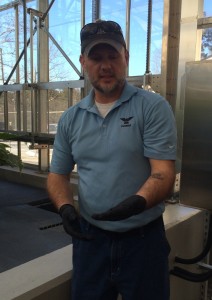Matt Wu
Food versus Fuel: A Pointless Fight Right Now
Government subsidies that boost ethanol production need to stay—at least for now.
Politicians wrangle over whether to use corn for food or fuel. One faction says ethanol production from corn pays a green dividend because the fuel burns cleaner than gasoline. The other side says turning corn into fuel raises food prices and the danger of starvation.
Let’s call a ceasefire. Food and fuel are complex issues and intertwined. We need more understanding and clarity to find the way forward and proper solutions.
While the pro-food argument appears logical, it overlooks one key factor. Oil prices complicate the situation and its role in rising food prices.
According to a study by the World Bank in 2013 on long-term drivers of food prices, oil prices are positively correlated with rising food prices. This means that as oil prices continue to rise, so will food prices.
The price of oil is highly variable. Because oil and food prices are linked, the price of food is therefore also highly variable. Kimberly Amadeo, an economic analyst and business planner for major international corporations, explains that three major factors go into setting the price of oil.
The first factor relates to traders who use certain criteria to bid and buy oil at an agreed upon price. Although the same criteria are used, the variables themselves are dynamic: output of oil, accessibility to oil supplies, and oil demand.
The second factor involves the Organization of Petroleum Exporting (OPEC). In order to keep oil exportation profitable for all countries, this organization sets the amount of oil that can be sold in a given time. Even though rising food prices/conflict affect everyone, countries are interested in immediate economic gain; therefore higher oil prices and profit trump lower food costs.
The third factor considers oil projected demand and use. The U.S. Energy Information Administration, which gathers data of national oil use, has shown that oil use is rising and will continue to do so. With a limited available oil supply, current oil spending practices are making the cost of oil rise, and consequently the cost of food.
Even though pro-food advocates incorrectly blame ethanol for rising food prices, international developments and natural disasters are actually the ones to blame. Without warning, these events can sharply lower the supply of oil and cause oil prices to skyrocket.
Outside of the control of both food and fuel supporters alike, world crises can strike. In 2012, Iran had a nuclear weapons scare so the U.S. and E.U. placed financial sanctions on the country. This greatly limited the worldwide supply of oil and the effects were tremendous. Gasoline prices rose to nearly four dollars per gallon and higher transportation costs caused food prices to soar.
Mother Nature is also unpredictable and relentless. In 2005, Hurricane Katrina violently struck the U.S. Gulf Coast causing major damage and displaced some 400,000 people. Hurricane Katrina also destroyed numerous oil refineries, affecting 19% of U.S. oil production and gas prices rose to five dollars per gallon.
It is apparent that the price of oil is very variable and as it continues to rise, it will also drive up the cost of food.
The pro-food position seems reasonable, but there is no direct evidence that ethanol production is linked to climbing food prices.
In 2012, rising food prices prompted a big push by pro-food advocates to stop ethanol production (under the Renewable Fuel Standard program) in the U.S. However, after examining 500 scenarios involving corn, food, and fuel-prices, 89% of them were not negatively impacted by the RFS and ethanol production continued.
Furthering the disconnection between corn-ethanol production and food prices are the annual rates of corn use and food inflation. If ethanol production was truly the culprit for worsening food prices, then the two rates would be similar, but it is not the case. The rate of food inflation more than doubles the rate of corn use for ethanol. There is therefore no causal relationship between ethanol production and food inflation.
Although ethanol has been speculated to worsen the food epidemic, it may do just the opposite. Because ethanol production relies on corn, farmers grow more of the crop than if it was only grown for food alone. The more plentiful supply of corn, according to the UK Department of Environment and Rural Affairs, may stabilize food supplies and thus lower the cost of food.
The process that determines the price of food is not simple. While oil strongly affects the price of food, it is not the sole driving force. Many other factors go into the price of corn flakes on the supermarket shelf.
As the world continues to advance and become more affluent, people change their preferences. For example, they may begin to prefer regularly consuming meat over grains, instead of as an infrequent occurrence. This shift in demand changes what farmers produce and their new output puts the food economy and prices into flux.
The exact formula for determining the price of food is very complex. The time and effort spent on deciding how corn should be used is better spent on discussing ways to prevent real issues like global warming. Therefore, further quarreling in the food versus food debate is pointless until new evidence from research is found.
Works Cited
Amadeo, Kimberly. “Why Are Food Prices Rising?” 24 Nov. 2014. Web. 17 Feb. 2015. <http://useconomy.about.com/od/inflationfaq/f/Why-Are-Food-Prices-So-High.htm>.
Amadeo, Kimberly. “What Factors Determine Oil Prices?” How Are Oil Prices Determined? 1 Feb. 2015. Web. 17 Feb. 2015. <http://useconomy.about.com/od/commoditiesmarketfaq/f/oil_prices.htm>.
Baffes, John, and Allen Dennis. “Long-term Drivers of Food Prices.” WorldBank. 6 May 2013. Web. 2 Mar. 2015.
“Corn, Ethanol, and Food Prices.” National Corn Growers Association. 3 Feb. 2014. Web. 18 Feb. 2015.
“USDA ERS – Food Dollar Series: Documentation.” USDA ERS – Food Dollar Series: Documentation. 24 May 2014. Web. 18 Feb. 2015.

